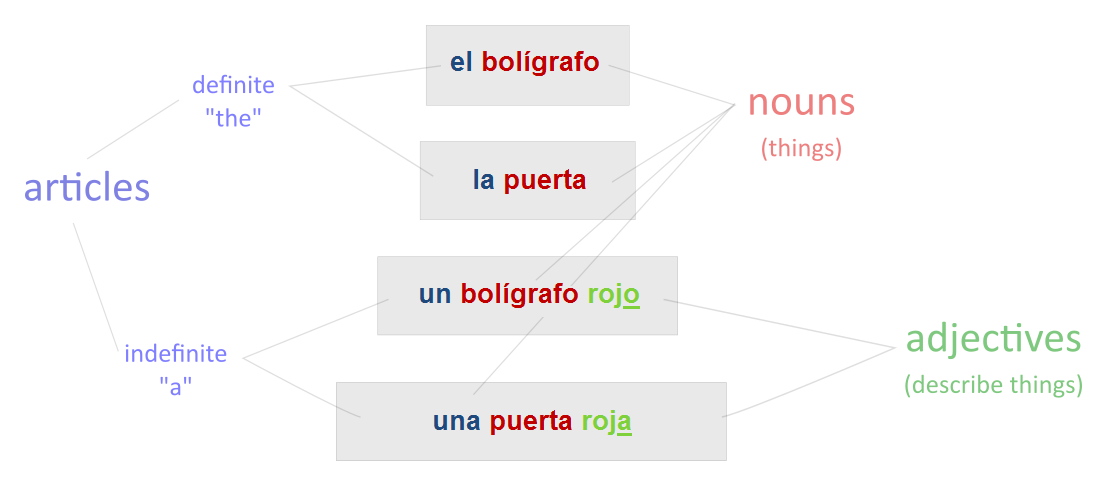Even simple Spanish sentences can seem complicated to complete beginners.
Let's have a look at the anatomy of simple Spanish sentences and see the grammar jargon used to describe each part of the sentence. If any of these Spanish grammar terms confuse you, click to see them in actual sentences:
Articles, Nouns and Adjectives
Articles are just the little words (like "the", "a" and "some" in English) used before names for things (nouns).
To help you remember these, think "articles" are like little particles.The word "noun" is just the latin word for "name".
Adjectives are words that add a bit more description to nouns. Colours are adjectives, for example.

Gender and Agreement
Spanish noun are either masculine or feminine; in other words, they have a gender. We've already seen that this means they use different articles (el, la, un and una). The gender of a noun also affects adjectives (the words that add descriptions to things). We say that adjectives must "agree" in number and gender with the noun. Take a look at these examples that agree in gender:

Plurality (Number) and Agreement
Spanish adjectives also have to agree in number; in other words, they also change slightly when they describe more than one thing:

Elision
Elision is just a fancy word that means to shorten or merge something by taking something out. In English, the words "I'm", "aren't" and "don't" are examples of elision, also known as contraction. Sounds (and letters in the written form) have been removed to make the words shorter.
These Spanish words are shortened in exactly the same way:

